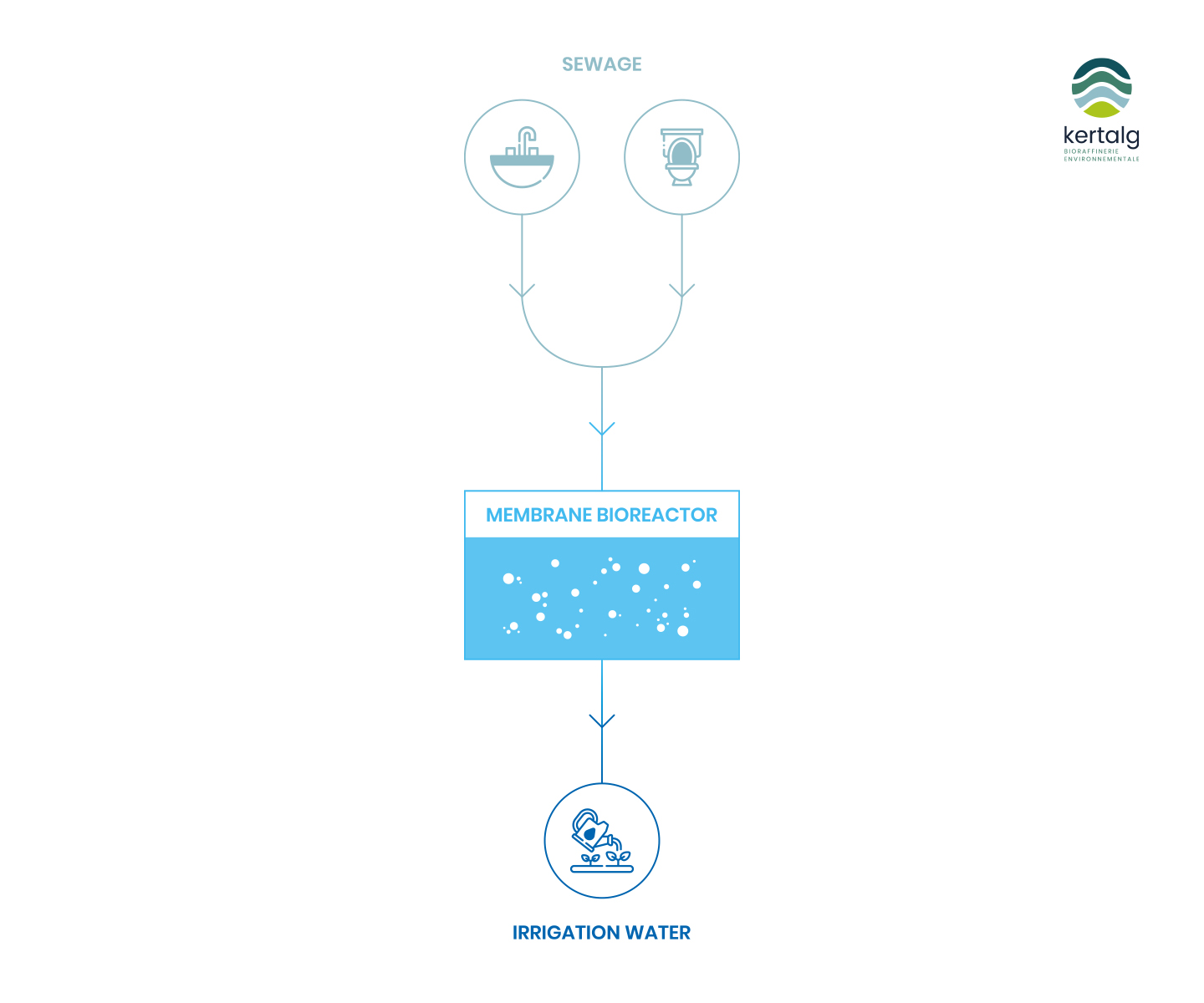Principle
Wastewater is treated using a membrane bioreactor, which combines biological purification and membrane filtration.
01. Collection
The wastewater is directed to a low point, the collection tank, to be homogenized and then sent to the bioreactor. If the waste water is generated at several points that are far apart, then a network of pipes must be built to connect them.
02. Biological treatment
This unit functions according to the principle of activated sludge: the organic pollutants contained in the wastewater (measured as BOD and COD - biochemical oxygen demand and chemical oxygen demand) will serve as a culture medium for aerobic bacteria growing in a controlled environment. Oxygen, necessary for the growth of the bacteria, is continuously injected into the culture medium.
This ensures the growth of the bacteria, which allows them to clean the water of its pollutants.
03. Filtration and recovery
Once the water is purified, bacteria are separated from the clean water by a membrane filtration system. The result is clean, clear water on one side and a sludge of bacteria on the other. This sludge can then be composted, or used as energy via the methanizer.
The water thus treated can be used to feed the flushing systems of a building, or as irrigation or cleaning water.

